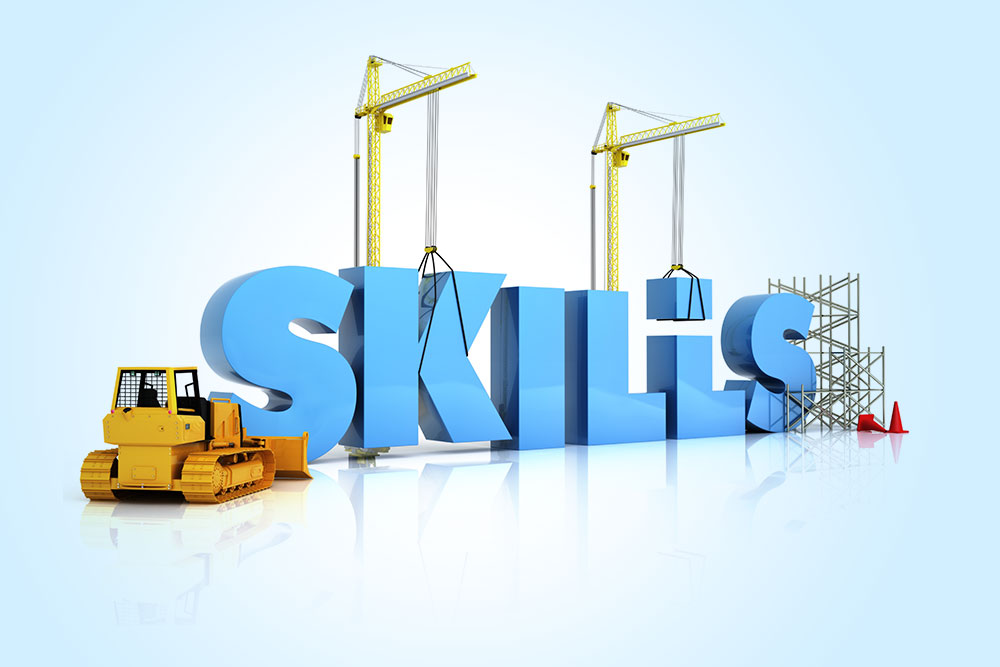
There are many hazards and risks in the construction industry. That means there are many training courses for workers at all levels in construction. And there needs to be: there were 45 fatal injuries to construction workers in the latest available data.
Employers have a legal duty to ensure the health and safety of their employees. Training supports their efforts and ensures they’re competent. There are a lot of possible training courses out there for you. Luckily, we’ve done the hard work by creating a helpful list of construction courses and discussing what they are and why you need them.
Construction Risk Assessment Training
Construction risk assessment training will take you through what a risk assessment is, discuss the hierarchy of controls and examines common hazards you’ll encounter in construction. A construction risk assessment and method statement (also known as RAMS in Construction) is done before construction is carried out, so it makes sense to start here.
What is it for?
This training supports legal obligations. Employers have clear legal duties to conduct risk assessments under the Management of Health and Safety at Work Regulations 1999. They must provide employees with adequate information, instruction and training to understand the measures put in place to protect them.
Why is it Important?
As construction has a poor health and safety record, risk assessments are needed to ensure you’re controlling hazards and protecting the well-being of employees.
CDM Duty Holder Training
CDM Duty Holder training is a course that covers CDM projects, construction planning, site risks and health and safety arrangements. CDM is the Construction, Design and Management Regulations 2015. They’re the primary set of regulations for managing health and safety on construction projects.
What is it for?
CDM Duty Holder training aims to help duty holders gain awareness of their roles and responsibilities on a CDM project.
Why is it Important?
The course ensures the safety of workers and the general public in construction projects. This is important. We mentioned the fatal injuries to workers in construction, but there were also 68 fatal injuries to members of the public in the latest available data, according to the Health and Safety Executive (HSE).

IOSH SHE for Construction Site Manager
‘IOSH SHE for Construction Site Managers’ (SHECSM) is a course that discusses why you need to maintain health and safety on construction sites and ways to do this.
IOSH is an internationally recognised organisation that maintains occupational health and safety excellence.
What is it for?
SHECSM is for construction site managers, as they have a vital role in ensuring the safety of those on their site. They also have to protect heritage, ecology and the environment.
Why is it Important?
This type of training is crucial because failure to properly manage a construction site could lead to fines, and even imprisonment, on top of the potential injuries or fatalities to workers.
IOSH Managing Safely
IOSH Managing Safely is a course that provides any manager with an awareness of their role in health and safety in their organisation. This course is not just for managers in construction. It’s for anyone with managerial duties, regardless of the industry.
What is it for?
This training is for all managers and helps them meet their legal, moral and financial duties. It provides a thorough understanding of managing health and safety within any organisation.
Why is it Important?
IOSH Managing Safely is a vital training course, as 565,000 workers sustained an injury at work in the latest available data, according to the Labour Force Survey.
IOSH Managing Safely Refresher
IOSH Managing Safely Refresher summarises the key points learned in the Managing Safely full course.
What is it for?
The course is for anyone who has already undertaken the full IOSH Managing Safely course.
Why is it Important?
You should take this refresher every three years to keep your health and safety knowledge current.
IOSH Safety for Executives and Directors
IOSH Safety for Executives and Directors focuses on the Plan-Do-Check-Act health and safety management model.
What is it for?
The course helps you integrate health and safety into your business goals at the upper management level.
Why is it Important?
Aside from the obvious consequences, such as severe injury or ill health, organisations with poor health and safety records are more likely to see costly accidents, claims, fines and employee risks.
Upper management has a moral duty to protect anyone affected by their organisation’s operations.
Now let’s look at training that’s beneficial for all levels of workers.
Working at Height in Construction Training
The Working at Height in Construction training is a short course that looks at what working at height is and the principles that will keep workers safer when carrying out this type of work. It also supports compliance with the law.
What is it for?
Working at Height training is for any worker required to work at height. This could be on a roof, scaffold, or any place where they could fall and injure themselves.
Why is it Important?
This is essential because 135 people were killed in work-related accidents, and 40 of them happened due to falls from height in the latest available data, according to the HSE.
Manual Handling in Construction Training
Manual handling in construction training looks at what manual handling in construction is, the risks involved and explores how to prevent accidents and ill health.
What is it for?
Manual Handling in Construction training is for any worker required to perform manual handling, which, as we mentioned, could be practically any worker in any occupation.
Why is it Important?
This is essential because 477,000 workers had a work-related musculoskeletal disorder (MSD) in the latest year for which data is available, according to the HSE. A significant cause of MSDs is poor manual handling.
Coronavirus Infection Control in Construction
Coronavirus Infection Control in Construction is a short course that takes you through information about the virus and mitigation and prevention measures to control the spread of it in construction.
Unfortunately, in the world today, coronavirus is still a threat. Luckily there is a specific training course for construction workers.
What is it for?
This training course serves as a guide for any worker in construction. It’s useful for those doing the work, and those planning it, as they’ll be putting prevention measures in place.
Why is it Important?
Even though it’s less talked about in the news, coronavirus is still a severe issue. There were 123,000 workers suffering from the virus in the latest available data, according to the HSE. So, it’s worth training on how to control it on your construction site.
Wouldn’t it be handy if all of these Health and Safety in Construction courses you need were in one place? Good news! They are. Learn more about all the training on the list of construction courses we’ve mentioned in one place.
Construction Training Is An Investment
Training for safety in construction isn’t just a legal obligation; it’s a worthy investment in your business and your employees’ well-being. At the very least, you should ensure your team has completed a Construction Risk Assessment training course. Health and safety is the foundation of your organisation; without it, the whole thing could come crumbling down.






















































































































































































































































































































































































































































































































































